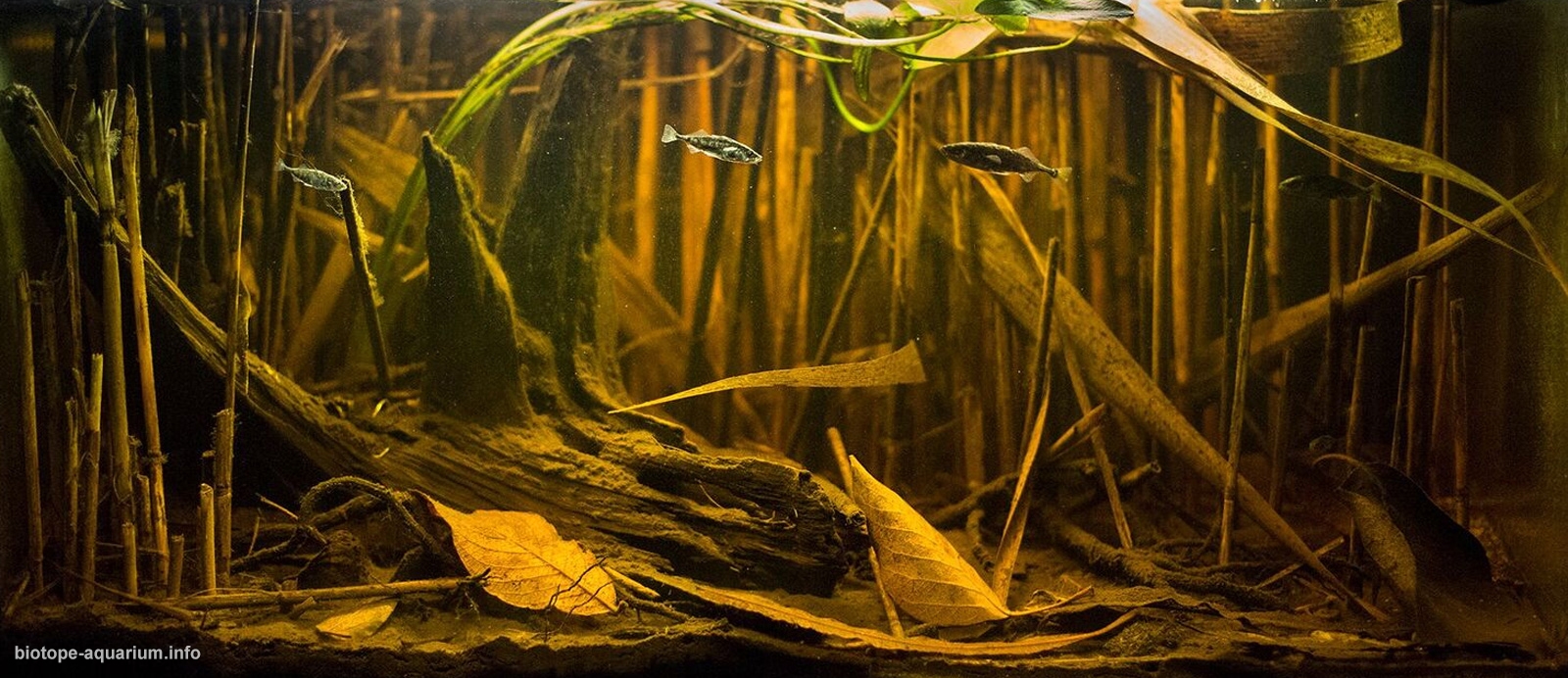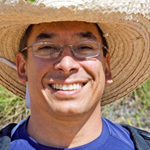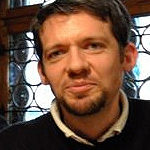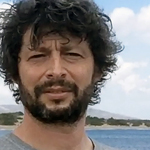Autumn in the Krężniczanka, mouth of a river, Poland
17th place in Biotope Aquarium Design Contest 2017
![]() Poland. Bartłomiej Paśnik
Poland. Bartłomiej Paśnik

Volume: 54 L
Dimensions: 60x30x30 cm
List of fishes: Gasterosteus aculeatus
List of plants: Sagittaria sagittifolia
Description of decorations: Elements of decoration came from the river. Including sand, deadwood, roots and reeds to resemble the authentic habitat.
Description of equipment: Filtration: Aquael FZN 3 1200l/h, Lighting: 10W LED 8000k
Water parameters: Water temperature 19-21°C, the hardness is 25°dH and the pH is 7,5.
Description of the area surrounding the biotope: The river in Lublin Voivodeship, which is the left influent of the Bystrzyca river. It flows between the villages Zagórze and Krężnica. Then take a turn and heads east to the city of Bełżyce, in the village of Babin begins to meander strongly and help to create picturesque landscapes. The river is over 20km long and ends its course near Lublin, affecting the marshy area to the Bystrzyca river.
Description of the underwater landscape of the biotope: Krężniczanka is home to dozens of aquatic organisms , including: Planorbarius corneus, Anisus calculiformi, Lymnaea stagnalis, Asellus aquaticus, Gammarus pulex, Nepa cinerea. The fish which can be found in the river were identified as Gasterosteus aculeatus. Sadly population has been significantly reduced by the introduction of invasive species of trout (Oncorhynchus mykiss) from breeding ponds. Salmo trutta and the rare Thymallus thymallus are also found in the river. . The biotop in the aquarium represents the mouth of the river, the bottom of the river is covered with deadwood, leaves and mud, creating a perfect hunting ground for always hungry sticklebacks. These small fishes are very much like Apistogramma from South America. Males are very terytorial, each have his own turf. During the spawning (May – July) they change their colors with green body, red throat and blue eyes, make them to look pretty stunning. Males build nests to which females are attracted, After laying eggs the male takes care of them until the fry begin to swim.
Description of the parameters of the habitat: In summer, the water temperature can reach 17-19°C, in the winter 2-5°C, the hardness is 25°dH and the pH is 7,5.
List of fishes: Planorbarius corneus, Anisus calculiformi, Lymnaea stagnalis, Asellus aquaticus, Gammarus pulex, Nepa cinerea, Gasterosteus aculeatus, Oncorhynchus mykiss, Salmo trutta, Thymallus thymallus.
List of plants: Sagittaria sagittifolia, Ceratophyllum demersum, elodea canadiensis, Berula erecta
Threats to the ecology: The river was severely polluted in the 1980s and 1990s, leading to the complete extinction of Astacus astacus and Pseudanodonta complanata. Unfortunately, all the time Krezniczanka is exposed to the negative impact caused by humans, littering or flushed fertilizers from nearby fields negatively affect this small ecosystem. How many more species will perish by human infertility?
Sources of information: Biotope information comes from my observations, Many years I live on this river. Photos: https://we.tl/Ui7l2s7ygt
Comments of the members of the jury of Biotope Aquarium Design Contest 2017

Background gives depth, I can’t figure out if this is print or reeds in background? Anyway, I would only change the driftwood to something more branched for this size of tank. It is a great representation of European biotope.

Bartłomiej Paśnik created a true biotope aquarium masterpiece. The setup draws you in and transports you into a mysterious and super interesting habitat. I am sitting in front of my computer in Venezuela and I can totally envision myself floating in that Polish river. When you look at an aquarium and it impacts you so strongly, you know you are in front of something completely special. Congrats Bartłomiej Paśnik you are a genius! By coincidence I have an image of a cleared and stained Gasterosteus aculeatus at https://mikolji.com/previous/IMAGE_GALLERY_PORTFOLIOS_IVAN_MIKOLJI_DIAPHONIZED_FISH_DSC05478.html

The sombre sepia tones of this fantastic biotope remind me of vintage photographs from the 1800s. Stark and simple, the illusion of a small scene at the edge of a reed thicket dying off at the end of the growing season is convincing, the more so for the fact that the reeds form the entire backdrop. The single, vibrant living plant provides a perfect counterpoint to this background. The muddy substrate strewn with broken reeds, twigs, driftwood, and freshly fallen autumn leaves is highly realistic. Having the only inhabitants being a few silvery sticklebacks should leave me wanting to see more species, but they are so lively and compelling to watch that seem to fill the entire space. The sparseness of fish life adds to the effect of an impending winter.

This aquarium is special because of its impeccable design and absolute biotopeness. Even before the start of the contest, I wondered how a prize aquarium might look like. My idea was similar to this one. The reed stems are typical for the underwater picture of our latitudes, and the reed is a wonderful, expressive element of design. The ordinary landscape of the local biotope turned into a work of art by the author’s skill. Sparse colours create a feeling of a cool autumn day. I was always admired by aquaria with such harmonious, strong, but unobtrusive design, achieved with the help of the simplest means. I put four works equally high. But, this aquarium is my favourite. With all my heart I wish the author to get a high place.
